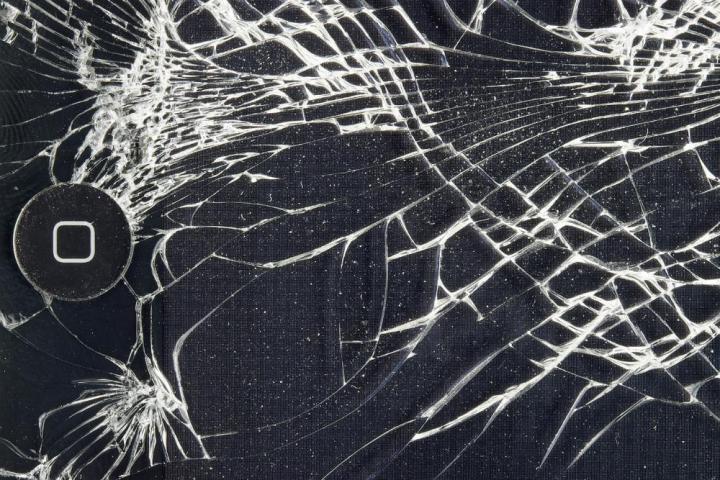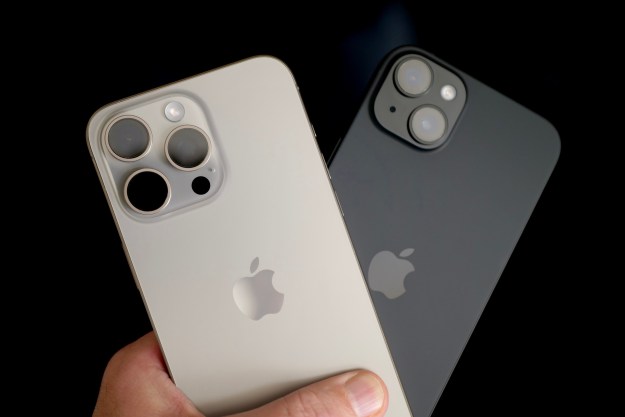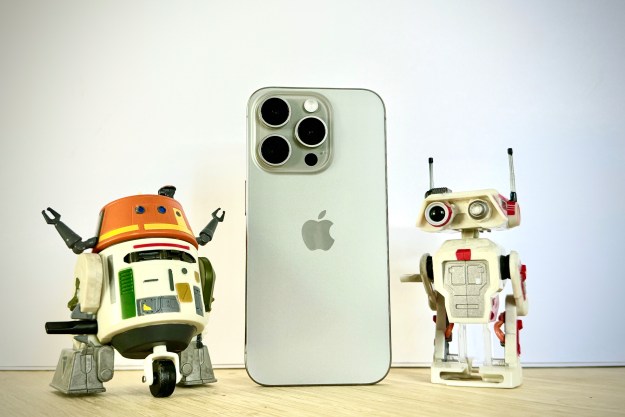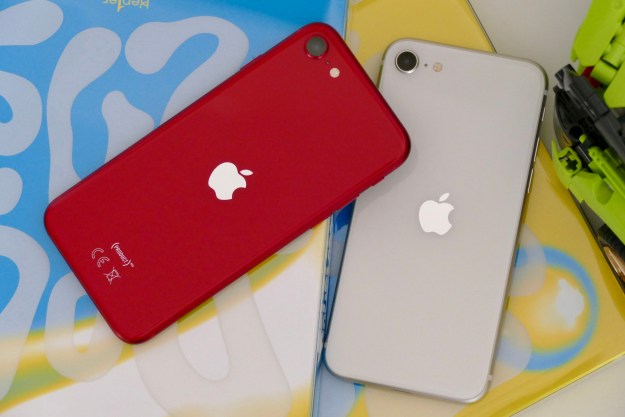
We’ve all had at least one of those heart-stopping moments when the iPhone slips from your grasp and tumbles to the floor. There’s a fight to contain the panic as you flip it over to survey the damage, thinking all the while “Why didn’t I get that extended warranty?” or “What was I thinking not getting insurance?”
A Square Trade survey from 2012 found that 30 percent of iPhone owners had experienced accidental damage in the last 12 months and claimed that Americans spent $5.9 billion on damaged iPhones between 2007 and 2012. In a poll of 2,471 iPhone owners by Mobileinsurance.co.uk last year 23 percent of respondents said their iPhone screen was currently broken, smashed or cracked.

Protection you may already have
Before you look at deals there are a few things you should investigate.
Homeowners or renters insurance: Many homeowners or renters insurance policies will cover your smartphone. You’ll have to read the policy to find out exactly what coverage you have, and there will be conditions. You can also call up your insurer to have your iPhone specifically added to a policy. It’s liable to increase your premium, but it could work out cheaper than a separate policy.
Credit card or bank account protection: You can get an extended warranty on electronics that you purchase with certain credit cards. For example, Visa and American Express both offer deals like this. Just make sure you read up on all the terms and conditions.
In the UK it’s very common for premium bank accounts to include smartphone cover as one of the benefits. It’s always worth checking before you pull the trigger on a separate plan.
Standard Apple Warranty: If you want to check exactly what is and isn’t covered by the standard Apple warranty take a look at the Apple website. It doesn’t cover any cosmetic or accidental damage. The most common forms of damage are cracks and scratches caused by drops, and water damage, and neither of those things is covered. You do also get “up to 90 days of complimentary telephone technical support.”
If you want additional coverage, below are some of the major options, their benefits, and what’s not so great about them.
AppleCare+ for iPhone ($99 for two years)
The extended warranties and support that Apple offers come under the Apple Care banner. You can purchase AppleCare+ for the iPhone and it will extend that basic warranty and the technical support to two years. It also includes “two incidents of accidental damage coverage, each subject to a $79 service fee plus applicable tax.” It does also cover the battery, cable, charger, and headphones that came with your iPhone.
There are a few exceptions in the terms and conditions, but probably the most important things to note are that it doesn’t cover you if your iPhone is lost or stolen, and it doesn’t cover cosmetic scratches and dents that don’t impact on the phone functioning.
Verizon Wireless Total Equipment Coverage ($10 per month)
This option is a combination of Verizon’s Wireless Extended Warranty program ($3 per month) and Asurion’s Wireless Phone Protection plan ($8.18 per month). If you make a claim, there’s a $200 non-refundable deductible and you can’t make more than two claims a year. The good news is that this covers you for accidental damage, loss, or theft.
You can find more details at Verizon’s website, but it’s worth mentioning that this is effectively an insurance policy with Asurion and you’ll have to claim with directly for anything not covered under the basic warranty. You should also be aware that your iPhone might be replaced with a refurbished unit.
AT&T Mobile Insurance ($7 per month)
The AT&T insurance product is also administered by Asurion. It covers your iPhone for loss, theft, accidental damage, and out-of-warranty malfunction. Once again, there is a $200 non-refundable deductible and a limit of two claims a year.
You can find out more at AT&T’s website. If you do claim then there’s no guarantee that the replacement handset will be new, it might be a “remanufactured” unit.
T-Mobile Premium Handset Protection ($8 per month)
The T-Mobile plan is, again, provided by Assurant, and is very similar to the deals offered by AT&T and Verizon. You are covered for accidental damage, loss, or theft, and have an extended warranty, but there is a non-refundable deductible of $175 for the iPhone and a limit of two claims per year.
You can find out more at T-Mobile’s website. Once again, a replacement handset can be “reconditioned” rather than new.
Sprint Total Equipment Protection ($11 per month)
The plan being offered by Sprint is a little different. You are covered for loss, theft, accidental damage, and there’s effectively an extended warranty, but you also get remote locate, wipe and alarm, and contacts backup. There’s a limit of three claims in a year on this policy and it’s provided by Asurion as well. The non-refundable deductible is $200 on the iPhone.
Sprint does offer a couple of other options and you can check the full range in Sprint’s brochure. Just like its competitors, replacement handsets can be remanufactured units.
 Best Buy Geek Squad Protection Plan ($15 per month)
Best Buy Geek Squad Protection Plan ($15 per month)
If you opt for this plan you’ll get extended support and warranty, one-time battery and accessory replacements, pixel repair, power surge repair, and cover for accidental damage. It costs $15 per month and there’s a limit of three claims in 24 months.
Once again, it’s worth reading the fine print. The terms and conditions state that they can repair your iPhone, replace it with “a product of like kind,” which could be a refurbished unit, or give you a voucher or gift card in the amount they think it’s worth. There is also a $150 service fee on accidental damage claims for iPhone owners. The plan also doesn’t cover loss, theft, or cosmetic damage.
SquareTrade ($100 for two years)
You can opt to pay $5 per month, or get a discounted $100 rate for two years of coverage with SquareTrade. This will cover you for malfunctions and accidental damage. It does not cover loss or theft. You can make up to three claims and there’s a $100 non-refundable deductible to pay for each claim. It will cover official Apple Store repairs and local repair shops.
Another big difference with SquareTrade is that they’ll try to repair your iPhone, and if they can’t, then you’ll get a cash pay-out, which is what they deem a replacement cost to be. They don’t send out refurbished phones, but don’t expect a check for the full price of a new iPhone either. Head to SquareTrade to find out more.
Protect Your Bubble ($8 per month)
Here’s another insurance plan that covers you for loss, theft, accidental damage, and provides an extended warranty. It’s an Assurant company. The deductible in this case is $120 for iPhones and you can only have two claims within a year.
You can get significant discounts for paying upfront, or taking out policies on multiple devices, but this is pretty common practice. Replacement handsets can be refurbished units. You can learn more at Protect Your Bubble.
The breakdown
To try and give you an at-a-glance breakdown of the main options here’s a table. We’ve broken down the AppleCare+ fee to work out a monthly cost, but you will have to pay the full $100 upfront. For SquareTrade and Protect Your Bubble, you can get discounts by paying upfront. The number of claims allowed refers to claims for accidental damage, theft, or loss. Our replacement example cost gives a total cost for one year of cover with one replacement claim of an iPhone 5S, but keep in mind that some of the options don’t cover loss or theft.
|
Apple |
Verizon |
AT&T |
T-Mobile |
Sprint |
Best Buy |
SquareTrade |
Protect Your Bubble |
|
| Monthly Cost | $4.16 (equivalent) | $10 | $7 | $8 | $11 | $15 | $5 | $8 |
| Deductible | $79 | $199 | $199 | $175 | $200 | $150 | $99 | $120 |
| Accidental damage | Yes | Yes | Yes | Yes | Yes | Yes | Yes | Yes |
| Theft or loss | No | Yes | Yes | Yes | Yes | No | No | Yes |
| No. of Claims | 2 in 2 years | 2 per year | 2 per year | 2 per year | 3 per year | 3 in 2 years | 3 in 2 years | 2 per year |
| Replacement Example Cost | $128.50 | $319 | $283 | $271 | $332 | $330 | $159 | $216 |
What’s the alternative?
A report from Consumer Intelligence Research Partners found that 76 percent of the people buying the iPhone 5S or 5C when they launched also bought cases. Whether a case can save your iPhone depends on the type of damage and the case you buy. It won’t help with theft or loss, but certainly improves the chances of your phone emerging from an accident unscathed. Check out our roundup of the best iPhone 5S cases and iPhone 5C cases for some ideas.
Editors' Recommendations
- This one Apple Fitness feature completely changed how I exercise
- Best refurbished iPhone deals: Get an iPhone 14 for $513
- An Apple insider just revealed how iOS 18’s AI features will work
- 5 phones you should buy instead of the iPhone 15
- How to find your lost phone (tips for iPhone and Android)


